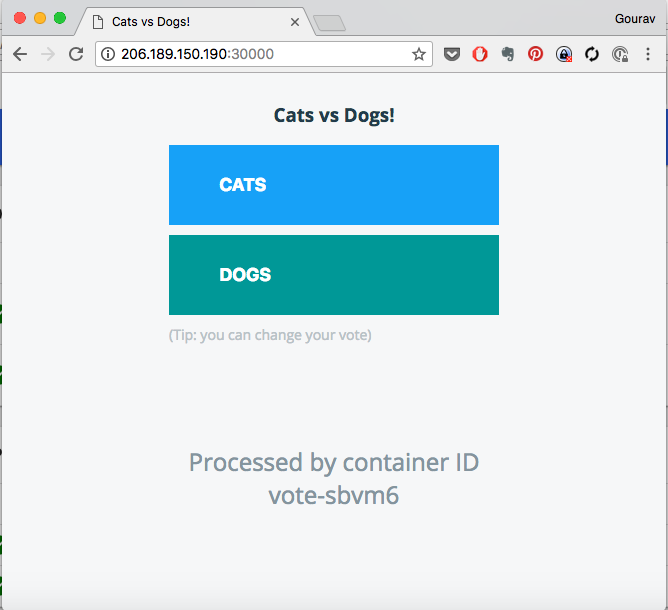Mini Project: Deploying Multi Tier Application Stack
In this project , you would write definitions for deploying the instavote application stack with all components/tiers which include,
- vote
- redis
- worker
- db
- result
Project Specs
- Apply the deployment and service code for the applications marked as ready
- Complete the code for deployments and services marked as TODO
- Apply the definitions that you have completed
- Validate the application workflow is operational by loading vote and result applications from the browser
- Set up ingress controller and add ingress rules so that you are able to access the apps using domain names e.g. vote.example.com and result.example.com
Following table depicts the state of readiness of the above services.
| App | Deployment | Service |
|---|---|---|
| vote | TODO | ready |
| redis | ready | ready |
| worker | TODO | n/a |
| db | ready | ready |
| result | TODO | TODO |
Phase I - Apply existing code
Create a namespace and switch to it
kubectl create namespace instavote
kubectl config set-context --current --namespace=instavote
kubectl config get-contexts
Apply the existing manifests
cd k8s-code/projects/instavote/dev/
kubectl apply -f vote-svc.yaml
kubectl apply -f redis-deploy.yaml -f redis-svc.yaml
kubectl apply -f db-deploy.yaml -f db-svc.yaml
validate
kubectl get all
Where you should see,
- deplyoment and services for redis and db created
- nodeport service for vote app
If you see the above objects, proceed with the next task.
Phase II - Create Deployments and Services for Remaining Services
You may find the files available in the same directory as above i.e. k8s-code/projects/instavote/dev/ with either partial or blank code. Your job is to complete the deployment and service yaml specs and apply those. While writing the specs, you could refer to the following specification.
- vote
- image: schoolofdevops/vote:v1
- application port: 80
- service type: NodePort
- nodePort : 30000
- worker
- image: schoolofdevops/worker:latest
- results
- image: schoolofdevops/vote-result
- application port: 80
- service type: NodePort
- nodePort : 30100
To Validate:
kubectl get all
The above command should show, * five deployments and four services created * services for vote and result app should have been exposed with NodePort
Find out the NodePort for vote and service apps and load those from your browser.

This is how the vote application should look like.
You could also load the Result page on the 30100 port of your Node IP/Address as,

Above is how the result app should look like.
Final validation is, if you submit the vote, you should see the results changing accordingly. You would see this behavior only if all deployments and services are created and configured properly.
Phase III - Set up host based traffic routing with Ingress
Use the documentation here Nginx Ingress Controller with KIND to set up ingress controller.
Launch Nginx Ingress controller as :
kubectl apply -f https://raw.githubusercontent.com/kubernetes/ingress-nginx/main/deploy/static/provider/kind/deploy.yaml
Check the pod for Nginx Ingress, if its running
kubectl get pods -n ingress-nginx
You may see the pod in pending state. Check why its pending and fix it. Thats part of your project work.
Once you have the ingress controller working, port this ingress rule for vote app and also add one for result app to make it work with nginx ingress controller that you have.
Also add the host file configuration as per the same document and validate you are able to use http://vote.example.com/ and http://result.example.com/ to access your services respectively.